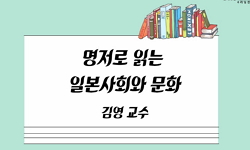본 논문에서는 1960년대부터 1980년대 초반까지 일본에서 인공임신중절 반대운동을 전개한 신종교 단체 세이초노이에와 그 창시자인 다니구치마사하루의 생명관에 대해 고찰한다. 1945년 패전...
http://chineseinput.net/에서 pinyin(병음)방식으로 중국어를 변환할 수 있습니다.
변환된 중국어를 복사하여 사용하시면 됩니다.
- 中文 을 입력하시려면 zhongwen을 입력하시고 space를누르시면됩니다.
- 北京 을 입력하시려면 beijing을 입력하시고 space를 누르시면 됩니다.
https://www.riss.kr/link?id=A109673277
-
저자
김율리 (이화여자대학교 철학연구소)
- 발행기관
- 학술지명
- 권호사항
-
발행연도
2025
-
작성언어
Korean
-
주제어
인공임신중절 ; 일본 신종교 ; 세이초노이에 ; 다니구치 마사하루 ; 일본사회 ; Abortion ; Japanese new religions ; Seicho-no-Ie ; Taniguchi Masaharu ; Japanese society
-
KDC
153
-
등재정보
KCI등재
-
자료형태
학술저널
-
수록면
31-56(26쪽)
- 제공처
-
0
상세조회 -
0
다운로드
부가정보
국문 초록 (Abstract)
본 논문에서는 1960년대부터 1980년대 초반까지 일본에서 인공임신중절 반대운동을 전개한 신종교 단체 세이초노이에와 그 창시자인 다니구치마사하루의 생명관에 대해 고찰한다. 1945년 패전을 맞이한 일본에서는 경제 재건을 위해 인구를 억제해야한다는 주장이 제기되었고, 이에 따라 1948년 우생보호법이 제정되며 인공임신중절이 사실상 자유로워졌다. 그러나 1960년대 들어 중절을 규제해야한다는 주장이 시작했는데, 이 시기의 일본 사회에서 중절 반대 운동을 주도한 단체가 신종교 세이초노이에이다. 세이초노이에의 창시자 다니구치 마사하루는 신비체험을 통해 인간은 신의 자녀이며, 생명 탄생은 신의 의지라는 진리를 깨달았다고 주장했다. 그는 생명을 살리고 기르려는 신의 의지를 거스르는 중절을 그릇된 행위로 간주하고, 종교교리를 설파하며 죽은 태아를 기리는 종교의례를 시행했다. 이러한 주장과 종교 행위는 중절이 인간 생명인 태아를 죽이는 행위라는 인식을 확산시키는데 기여하였다. 한편 극우주의자로서의 면모도 가진 다니구치는 국가를 하나의 생명체로 이해했다. 1960년대 고도성장기에 접어들면서 일본 사회는 노동력 부족과 인구 고령화로 인한 국가 활력 쇠퇴에 대한 우려가 커졌다. 국가를 하나의 생명체로 이해한 다니구치의 주장은 이러한 우려와 합치되며 힘을 얻게 되었다. 그는 중절을합법화한 우생보호법의 폐지를 위한 정치조직을 결성하며 1960년대부터 1980년대 초반까지 일본의 중절 논쟁에서 핵심적인 역할을 하였다.
다국어 초록 (Multilingual Abstract)
This paper examines the anti-abortion movement in Japan from the 1960s to the early 1980s, with a particular focus on Seicho-No-Ie, one of the Japanese new religions, and its founder, Taniguchi Masaharu, especially in relation to his views on the sanc...
This paper examines the anti-abortion movement in Japan from the 1960s to the early 1980s, with a particular focus on Seicho-No-Ie, one of the Japanese new religions, and its founder, Taniguchi Masaharu, especially in relation to his views on the sanctity of life. After Japan’s defeat in 1945, population control was widely advocated as essential for economic reconstruction. In response, the Eugenic Protection Law was enacted in 1948, effectively legalizing abortion. However, by the 1960s, calls for stricter abortion regulations began to emerge. Among the most prominent actors in this emerging anti-abortion movement was Seicho-No-Ie, which played a pivotal role in shaping Japan’s anti-abortion discourse. Taniguchi Masaharu, the founder of Seicho-No-Ie, claimed to have attained spiritual insight through mystical experiences. He believed that human beings are children of god and that the birth of life represents divine will. Taniguchi condemned abortion as a morally wrong act that defies god’s intention to preserve and nurture life. He disseminated this religious doctrine while also conducting rituals to commemorate aborted fetuses. These teachings and practices contributed significantly to promoting the belief that abortion constitutes the taking of human life. Furthermore, Taniguchi espoused an ultranationalist ideology, perceiving the nation as a living organism. In the postwar period of rapid economic growth, societal concerns about labor shortages and the aging population intensified. Taniguchi’s organicist conception of the state aligned with these anxieties and gained influence. He established a political organization advocating for the repeal of the Eugenic Protection Law and played a central role in Japan’s abortion debates from the 1960s through the early 1980s.
목차 (Table of Contents)
- « 요 약 »
- Ⅰ. 머리말
- Ⅱ. 다니구치 마사하루와 세이초노이에
- Ⅲ. 생명과 인공임신중절에 대한 다니구치의 사상
- Ⅳ. 세이초노이에의 중절 반대운동
- « 요 약 »
- Ⅰ. 머리말
- Ⅱ. 다니구치 마사하루와 세이초노이에
- Ⅲ. 생명과 인공임신중절에 대한 다니구치의 사상
- Ⅳ. 세이초노이에의 중절 반대운동
- Ⅴ. 맺음말
- «참고문헌»
- « 要旨»
- « Abstract »
동일학술지(권/호) 다른 논문
-
- 한국일본사상사학회
- 호리에 노리치카
- 2025
- KCI등재
-
- 한국일본사상사학회
- 허지향
- 2025
- KCI등재
-
관광지로서의 근대도시 — 동래온천과 유흥 산업을 둘러싼 정착민 식민주의 정동 —
- 한국일본사상사학회
- 이지현
- 2025
- KCI등재
-
고등학교『일본문화』교육과정 변천에 대한 고찰 - 15년 개정, 22년 개정 일본어 교육과정 문화 요소와 비교를 중심으로 -
- 한국일본사상사학회
- 민수현
- 2025
- KCI등재





 KCI
KCI eArticle
eArticle





